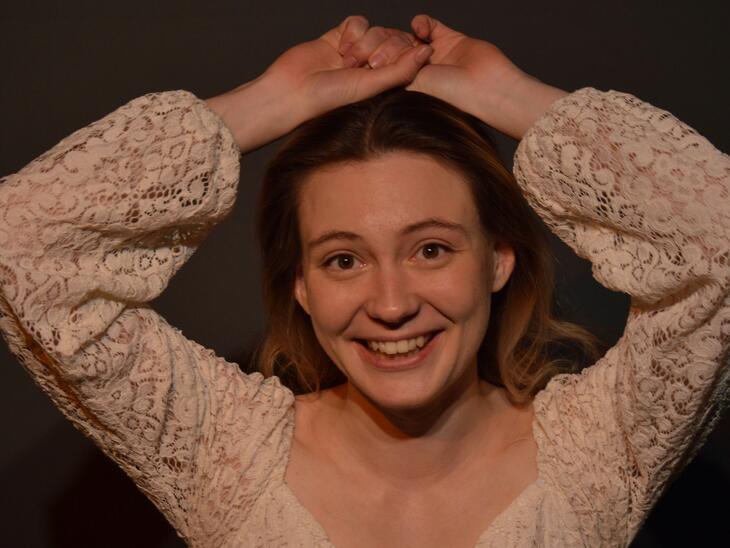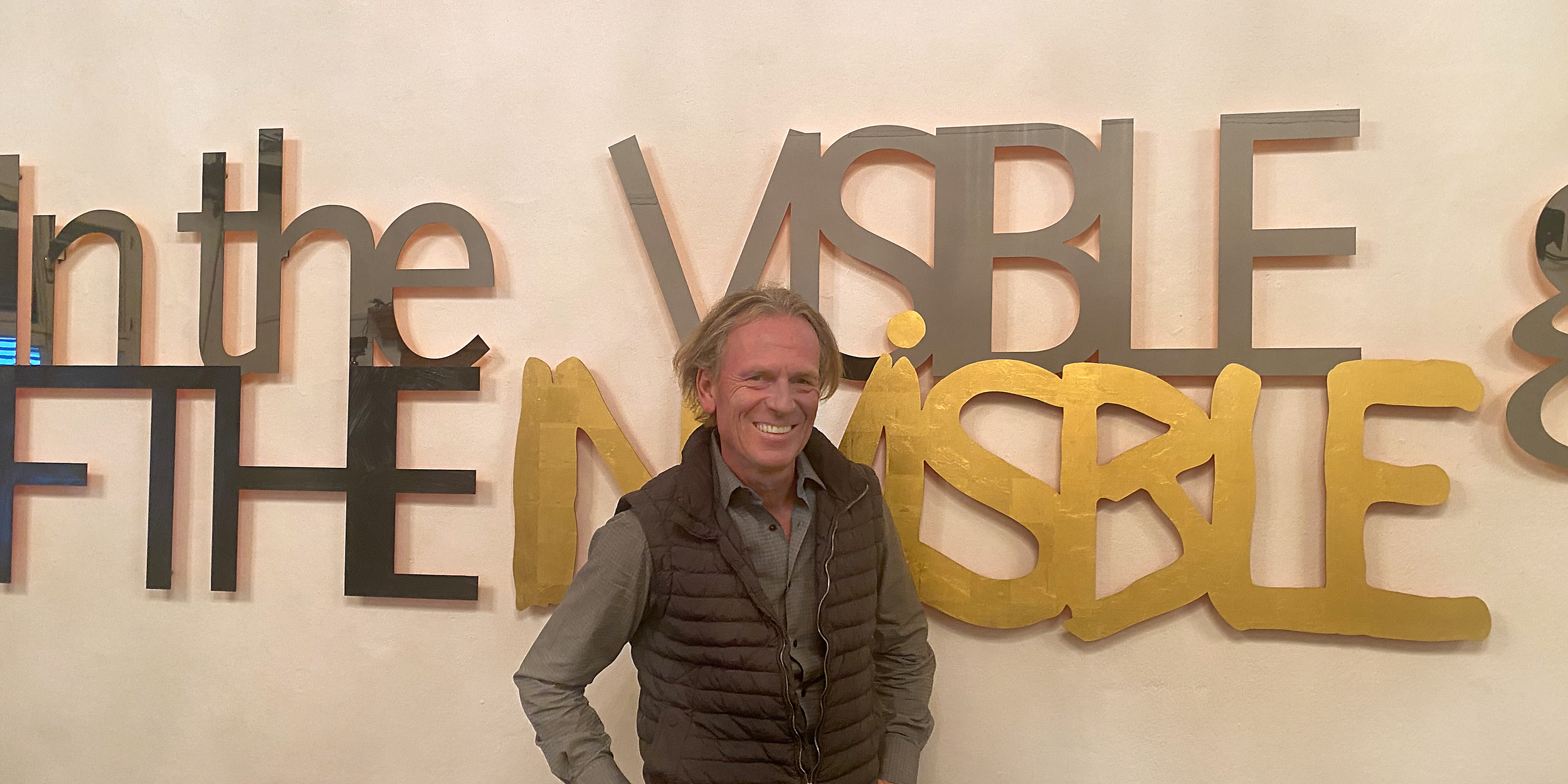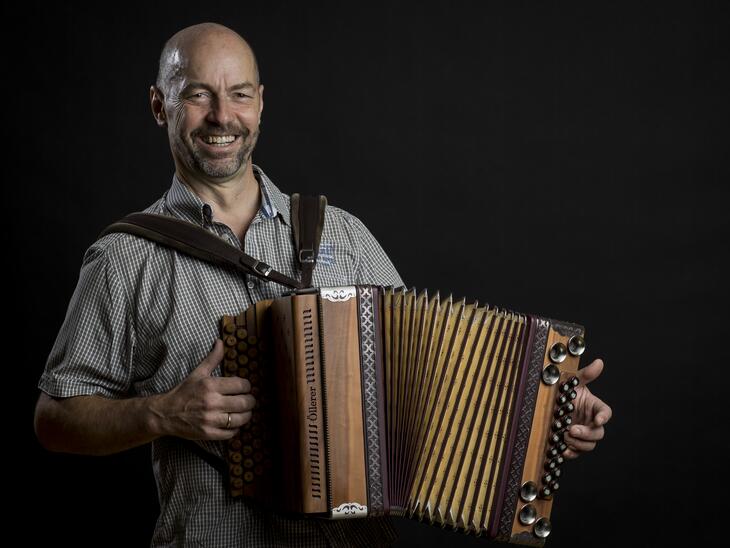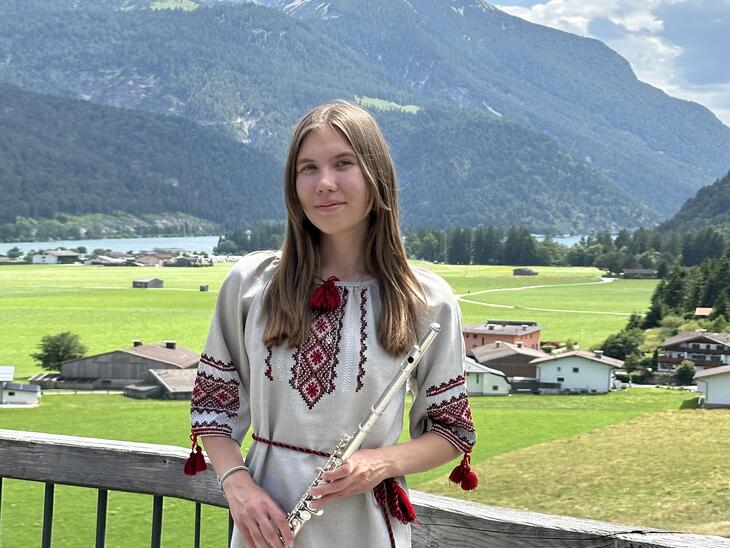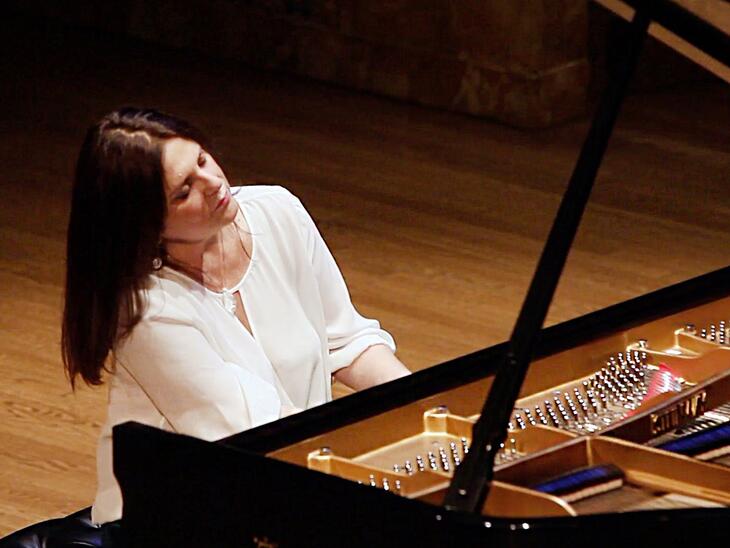His projects on manipulation, genetic engineering, joy or individual and social change have been shown in exhibitions worldwide and works have been included in private and public collections. In addition to his professional work as a freelance visual artist, Dieter Huber is also involved in social projects that use art to address topics such as flight/migration (MARE MORTO), speed/automobile myths (ZWISCHENGAS), abundance/waste/garbage (WASTE), global economy/money/power structures (ASSETS+CLAIMS), freedom and security (#SAFE), spirituality (SPIRIT) and love (AMANTI).
It feels like one crisis follows the next in the news. In the invitation text to your latest exhibition, you motivate us by saying that difficult times help us to shed what has become unnecessary in order to focus on the essentials. That's a nice approach. Is that the reason for the theme of your current work, "Love"?
During the problematic Covid period, a friend told me about the Greeks' highly differentiated concept of love two and a half thousand years ago: EROS - sex, passion, desire, up to the fiery irrational loss of control; PHILIA - forms of friendship; LUDUS - aspects of playfulness; PRAGMA - mature love, understanding, tolerance, also marriage; PHILAUTIA - self-love, in contrast to narcissism; PAIDERASTIA - for which people go to prison today and AGAPE - love of neighbour, which Christians have been spreading around the world for two thousand years. A revolutionary and highly topical concept, by the way! I wanted to take a closer look at this and this resulted in two years of intensive research with over 5000 documents and 1800 selected text passages. As a result, the work cycle AMANTI Games of Love was created with 366 texts and a love picture for every day of the year, as well as the two-volume 800-page publication LOVING and LOVED. For me, the political repression became a splendid isolation with love.
How important is the topic of love and what can be said or shown about us and our culture with regard to love? Are the differences between cultures perhaps not so great?
Some people understand love in a roundabout way, which is not love. As soon as we realise that something is wrong, such as dominance, ignorance, coercion, instrumentalisation, neglect, it is certainly not love. For my last film LOVE IS ? 99 people spoke about love. It shows that regardless of age, gender, socialisation, level of education and cultural background, we are connected as human individuals through the heart and are basically close to each other, even if we may have the most diverse social, political, material, cultural, ego-based or religious differences in everyday life and even still fight each other over them.
The great cultural achievements of justice, truth, freedom, peace, solidarity, but also care, compassion, respect, even the basis of the constitution of the EU from the fascist Panopticon on Santo Stefano, arose from the spirit of love. When we open our minds and hearts, we are ready for love. It inspires us and brings out the best in us. We are then in love, we become love. We can perceive love with all our senses, our mind knows it too, but above all we can feel it. We feel it more and more often, because it is always there. When we develop the courage to take the risk of choosing love, we create a magical moment, we build a bridge and love reaches out and guides us, it connects us. First and foremost to our self and, if we want, to living beings, to experiences, to things, to beauty, to everything, forever. We expand, we grow, we become one with what we love. In this way, love becomes a means of communication par excellence.
It is not only the process of creating your art that is multimedia. You also present your work in different genres. At the Literaturhaus, the theme of love could be experienced with dance, talks, readings, book presentations ("AMANTI. Spiele der Liebe", Kerber Verlag, 2022), exhibitions and films. How important is it for you to reach the audience on different levels?
As a visual artist, you initially work alone, introverted. This retreat, focussing on the essentials, researching, going into silence, create the conditions for an independent, creative, creative process - very similar to the path of self-discovery. The communication of content and the work requires the opposite prerequisites; you work in an extraverted way. On the one hand, I believe in the radiance of my works, independently of myself as an artist. In addition, I have been running an extensive website for decades, which is currently visited by around 200,000 people every year. I offer open access for everyone and free downloads of images, texts, films and even complete publications. Despite my digital media, I am an advocate and lover of high-quality books, have designed and produced books for many colleagues and museums and have published two dozen monographs on my own work. Many texts about visual art were too vague and interchangeable for me, which is why I started writing forewords and epilogues to my own projects years ago. My books are conceived as picture books that bring together texts by authors who often know nothing about art, but a lot about the subject in question. I have also curated events to accompany my exhibitions, organised personal tours, lectures - most recently on artificial intelligence - and explanations of the individual projects.
With SOUND OF LOVE, involving musicians, dancers, actors and a variety of technology, I have come full circle to my studies at the Mozarteum. This is not about art, not about communicating my own works, but about creating an atmosphere of love together with the audience for an evening through the media of text, performance, dance, music, film, circle song, intervention, books, visual arts and with a gift of love for each guest. Love is a cultural achievement that can be learnt. The diverse, highly positive feedback confirms this.
I found the following statement on your website: "Innovation in art is shown in the technique, relevance in the content." What do you want to convey with your art, what should remain?
Art is not self-therapy, not a hobby, not a pastime, not a game of whims and attitudes. In addition to its innovative formal quality, art must offer me socially or individually relevant content. Art for art's sake interests me at most as a consumer. Since my studies, I have dealt with topics that I considered important, but underrepresented in perception and reception: Genetic engineering and manipulation, migration, freedom and security, abundance and waste, speed, consciousness, etc. The themes and their visualisation and materialisation must of course be viewed in the context of the time - posterity will determine how timeless and fundamentally successful the implementation was in the individual work.
You also say that "there is more to life than just sticking to limits." Which limits would you like to exceed?
I don't even know where you got that from. But it sounds like a former self. It's about crossing boundaries, overcoming your own fear again and again. We live in a world that is highly economised on the one hand, but is nevertheless increasingly regulated and controlled down to the last detail. As we can see, this leads to an infantile, dependent and dependent society. Many people no longer want to grow up - buying, playing, consuming more and more and permanent distraction are the priority. There may be many plausible reasons for this in detail, but the basic question is not: "What am I entitled to?", but: "What am I able to offer and contribute?". The fact is: the more we come to ourselves, the less protection and guardrails we need. We can only live and act authentically when we have come to ourselves. As with love, freedom first arises within ourselves. Free from what and for what, we also decide for ourselves. The dissolution of judgements, the reduction of the ego, the questioning of habits and beliefs - there are a lot of limits that need to be crossed. The big and important boundary crossings take place within us, and we can also allow ourselves to break the odd rule in the "nonsense of the world".
I see human existence as a lifelong process of development and learning, a process of becoming whole through refinement on all levels towards the highest possible perfection until physical death.
How did you go from stage design and "theatre-related craftsmanship" to becoming a freelance visual artist? What was the path to computer-generated art like?
After a few excursions into the world of theatre (Ruhrfestspiele Recklinghausen, Salzburg Festival, the world's first holography project at the Marionette Theatre, stage designer, theatre painter, stage technician), it was clear to me that this was not my world. I was annoyed by the dominance of the directors as well as the affectation of the actors and singers. In this world, everything seemed superficial to me and even the significant was just an attitude. So I started out as a freelance painter, incorporated texts into pictures, worked with photography, realised interventions in public spaces and created my first computer image in 1986: In an etching by Francisco de Goya, a landscape painting, I digitally inserted a window into a closed stone tower. A very small intervention with major consequences for the rest of my life. I suddenly realised that the light I brought into this tower with my digital retouching would change everything. The previous claim to truth of a photograph, our current view of the world, was therefore obsolete.
This led me to my most successful cycle of work, KLONES. In 1990, the international Human Genome Project was launched with the aim of completely decoding the entire human genome. The idea was that by completely sequencing the chromosomes of the base pairs, humans could be cured of diseases, abilities could be optimised and ultimately a completely new image of humanity could be created. I transferred this process visually to images. Analogue images of the world were digitised, altered on the computer according to my own ideas and returned to the analogue of a work of art. With plants this was generally perceived as beautiful, with landscapes opinions were divided, with human likenesses it became problematic and with sexual characteristics - as the most individual physical expression - it became extremely difficult. However, the principle is the same in all areas.
This cycle of works, begun in 1993, was not shown anywhere for four years - a very long time for a young artist. At that time, the question was still whether photography could be art. Not to mention computer-generated images. It was only when the genetic debate reached the media that the first exhibitions and participations followed - first in Germany, then in several countries in Europe, the USA, Australia and China. Works were included in international collections such as the Saatchi Collection London, Fundation Caixa de Pensions Madrid, the DZ Bank Collection Frankfurt and the Austrian Art Collection Vienna. These works were represented by galleries in several countries at international art fairs and through Peter Weiermair I had my first solo exhibition in a museum in 1999. With KLONES I had created a brand in the art world that had the potential for an international market and career. Two books about the 137 works were published and I was finished with my work. The market demanded more, but I dropped out.
What conditions do artists need?
There is no general answer to this question. Directors, singers, musicians, actors, etc. work together, are in many cases service providers and need a commitment, and through fair pay they should also be able to make a decent living from it. However, there is a fundamental difference between composers and singers. The questions of where art begins and when something can be labelled as art are fluid. I am interested in artists as soloists who do not interpret, but try to bring something new into the world. To put it bluntly: it doesn't need any special framework conditions. The now diverse funding programmes sound good at first, and in individual cases they lead to great things, but mostly to mediocre diversity. Everyone, including artists, who contribute and achieve something for society should simply be paid adequately. Real artists will and must realise their art, regardless of circumstances and the outside world, they have little choice.
For over 40 years, we have been calling on politicians to finally make art fully tax-deductible. We are obliged by the state to become mini-entrepreneurs with enormous bureaucracy, but we are not allowed to sell our "product" and our "service" to every other company. If this were finally implemented, many artists could do without every cent from the public purse.
What is the role of art from your perspective?
Art makes a contribution to the development of the individual, to society, and works to raise the frequency of mass consciousness and direct the focus to important underrepresented topics.
What is the beauty of your profession?
I see art as a vocation. To take the freedom to deal with what you think is relevant and to realise it in the way that is appropriate - independently of everything else. I also consider the link between art and life - the personal "experience" of a subject - to be extremely important. For example, I worked for 11 days and nights as a "handyman for everything" at the lowest level in a Michelin-starred restaurant for a "kitchen picture", obtained a pilot's licence for AIRBORN to carry out the necessary aerial photography directly, cooperated with the police, army and the Cobra task force for #SAFE, and worked as a key account manager, to personally negotiate with armaments manufacturers at the ShotShow in Las Vegas, searched the southern Italian islands for years for MARE MORTO, drove over 300 km/h for ZWISCHENGAS, entered landfill sites and restricted military areas for WASTE and meditated for years for SPIRIT. Theory provides an overview, personal practice provides a view from the inside.
What are the difficult times in your profession like?
When the extremely important and necessary doubts about the world and self-doubt get out of hand, when you no longer know how to pay bills on time, when your own work is ignored for a long time, when you feel that a work has not turned out in the best possible way, when you are unable to cross personal boundaries at the moment.
What advice do you want to and can you give young artists?
If I had children who wanted to become artists, I would do everything I could to dissuade them and consider other options with them. But if there was no other way, I would give them my full support. The path of art is rocky and hard. When I was young, I was constantly travelling - exhibitions, art fairs, everything interesting I wanted to devour. This method initially gives you an overview, but at least unconsciously influences your own work. I now look at as little fine art as possible. This helps me to allow my innermost self to emerge. The source is within and in the world, not in the art of others. In short: look as little as possible to the left and right, develop what is personal and independent - regardless of the response from the outside. In the long term, this is the only chance for a noteworthy individual artistic expression.
